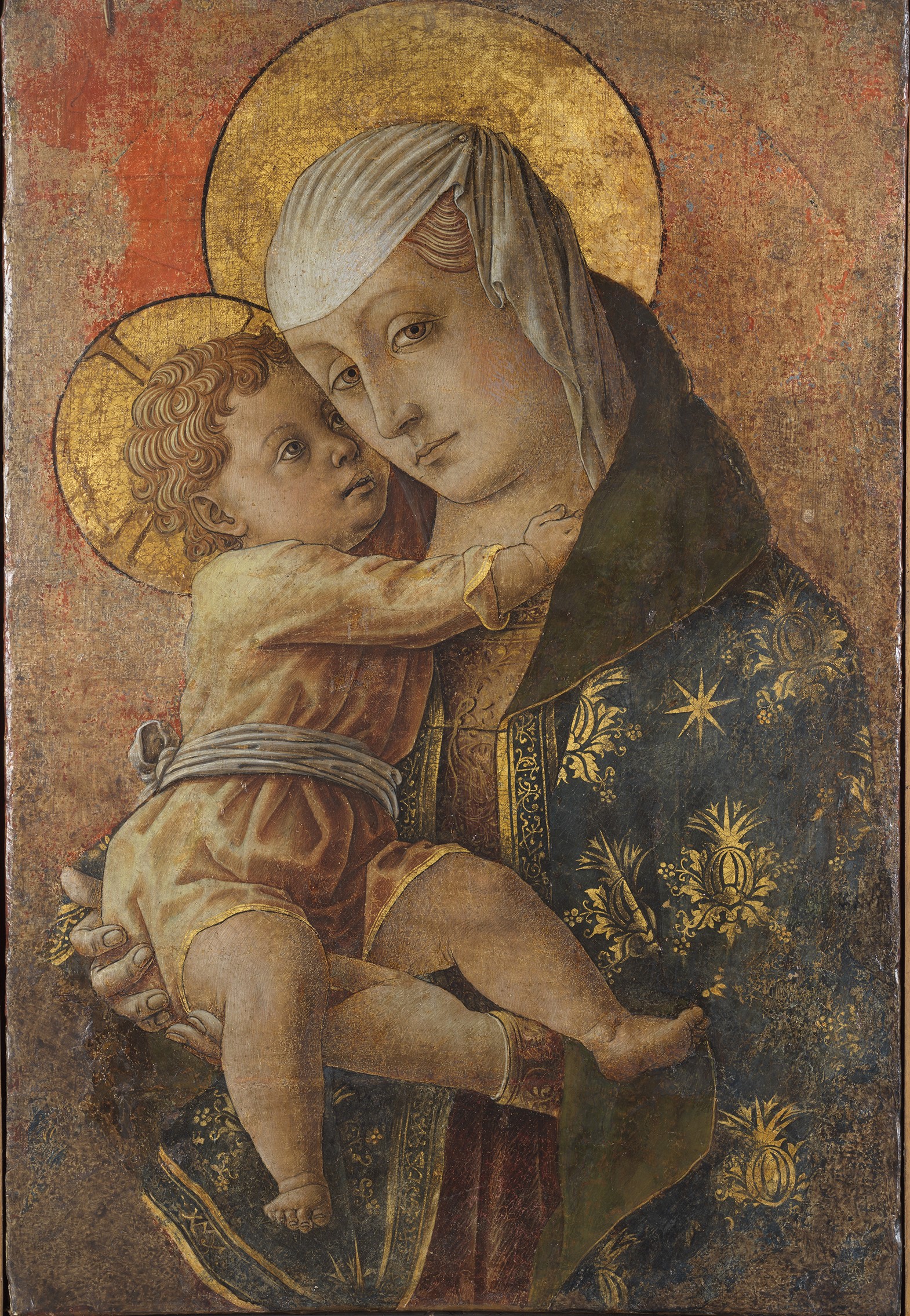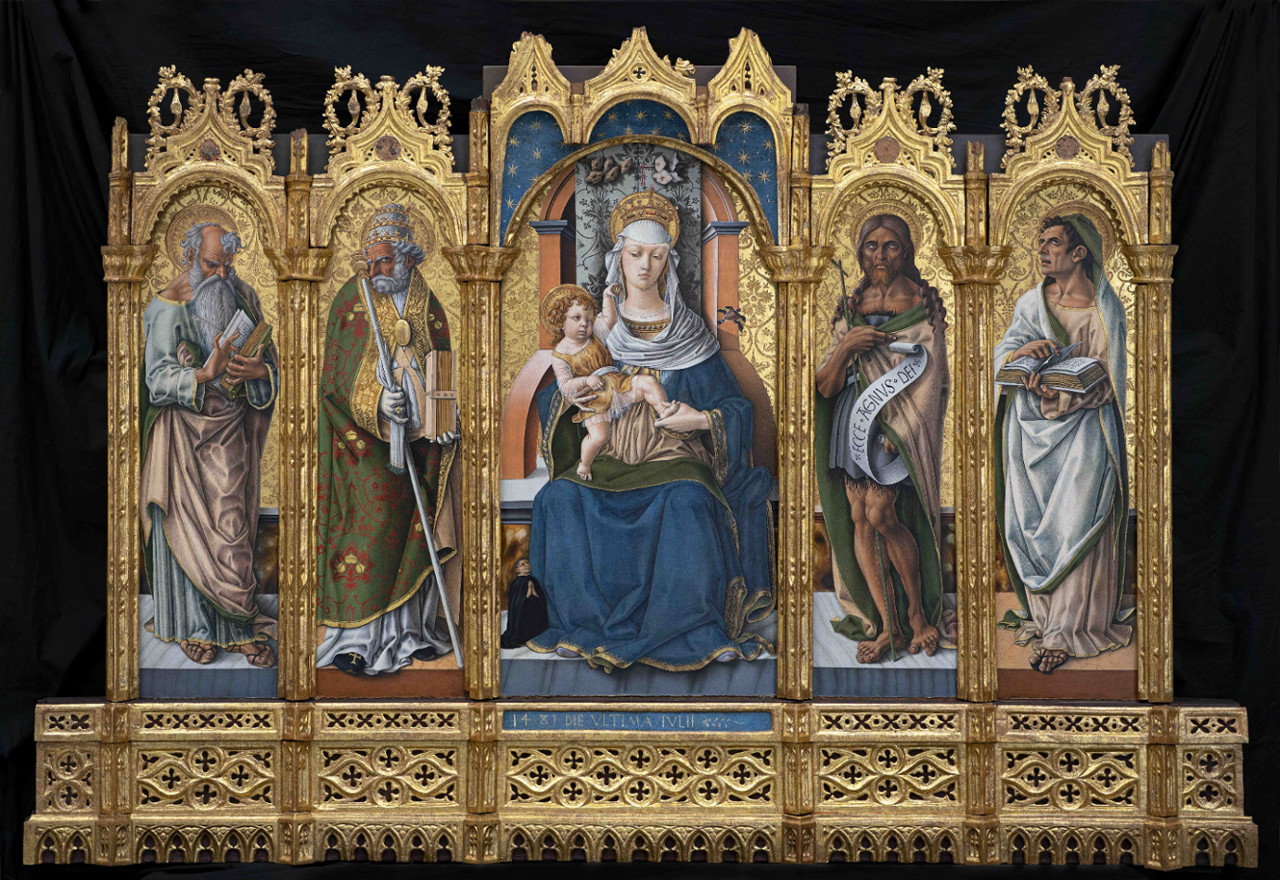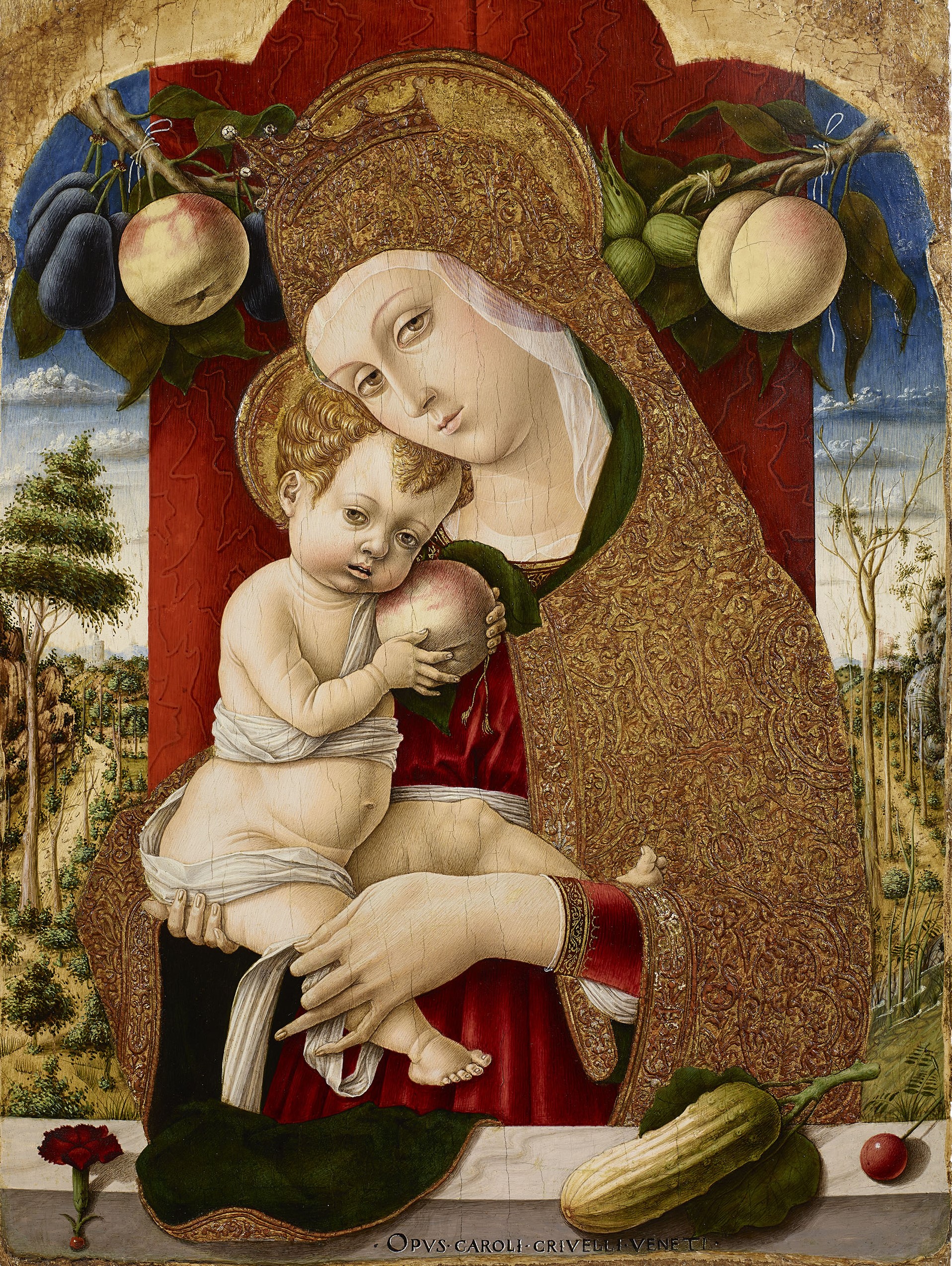Carlo Crivelli, Madonna with the Childo, 1482-1483, 33.5 x 46 cm, Bergamo, Carrara Academy
Gold is the color that intertwines the wonders of the painting of this restless master experimenter, Venetian by birth, who moved from the lagoon to Zadar and landed in the Marche, on the routes of merchants and artists to definitively influence the history of art of this region. with his always different inventions, full of technique.
Unknown for decades, rediscovered by the English Pre-Raphaelite artists who found extraordinary references to him, disputed by collectors around the world, Carlo Crivelli is today an independent figure, one of the most singular, precious, experimental talents of the fifteenth century.
If in the nineteenth century one part of the history of art was concerned with him, on the other the market misunderstood him, scattering many of his masterpieces. In addition to the Napoleonic suppressions that transferred many works to Milan at the Pinacoteca di Brera, the great migration took place towards Great Britain to the point that, to date, the National Gallery in London preserves the most important corpus of his paintings in the world.
From 7 October to 12 February a project entitled Carlo Crivelli. Wonderful relationships invites the public on a journey of discovery through the wonders of the painting of one of the masters of the Renaissance, combining his language with the beauties of the Marche.

Carlo Crivelli, Madonna with Child, PRE RESTORATION, Tempera on canvas transported from the table, 40 x 59 cm, Macerata, Civic Museums of Palazzo Buonaccorsi
The pretext of this trip curated by Francesca Coltrinari and Giuliana Pascucci is offered by the important restoration work carried out in favor of the Madonna and Child by Crivelli, kept in Palazzo Bonaccorsi, in Macerata, and presented for the first time in its full legibility.
For this reason, the first stop on the journey in the artist’s footsteps will be Macerata, home of the exhibition, inside Palazzo Buonaccorsi. The tour will then continue in eight municipalities of the Marche Region that hold works created by the artist or in some way connected to him, inviting travelers to grasp, as the title suggests, the series of “wonderful relationships”.
The one that will be hosted inside Palazzo Buonaccorsi, designed in 1697 by Giovan Battista Contini, a pupil of Gian Lorenzo Bernini, will be the first monographic dedicated to the artist and will complete the series of exhibition projects dedicated to him at an international level starting from the 2000, from the Brera Art Gallery in Boston, from the Vatican Museums in Birmingham.
Visitors will be able to admire the exhibition seven paintingscoming from Italian museums and beyond, selected with the intention of bringing back some of the artist’s works to the territory of origin and to highlight the many “wonderful” relationships existing between the works, the contemporary masters, the museums that welcomed them until today’s visitors.

Carlo Crivelli, Madonna and Child with Saints, 1481 (after restoration). Courtesy of the Vatican Museums
There Madonna and Child of Macerata will support Madonna of the milk coming from the Parish Gallery of Corridonia, and again the Madonna and Child from the Carrara Academy of Bergamo, the Compassion (Dead Christ lamented by the Virgin, St. John the Evangelist and St. Mary Magdalene) from the Vatican Museums, Saint Francis collecting the blood of Christ from the Poldi Pezzoli Museum in Milan, Blessing Christ from the National Museum of Castel Sant’Angelo in Rome and finally a work by his brother Vittore Crivelli, entitled San Sebastiano and devotees kept in the deposits of the Superintendency at the National Gallery of the Marche in Urbino, which will be returned at the end of the exhibition in Montegiorgio, city of origin.
From Macerata the itinerary to discover the artist ignored by Giorgio Vasari will continue towards Corridonia, San Ginesio, Sarnano, Monte San Martino, San Severino Marche, Serrapetrona, up to Belforte del Chienti, to allow the public to rediscover the work of Crivelli , between large altarpieces and smaller works, intended for private devotion, and the link with the Marche region that welcomed him from 1468 to 1495 and in which the artist created most of his masterpieces.

Carlo Crivelli, Madonna and Child, 1482-1483, 33.5 x 46 cm, Bergamo, Carrara Academy
L‘Crivelli itinerarya project developed thanks to the collaboration with the University of Macerata, the municipalities concerned and the dioceses of Macerata and Camerino, will put some works of the Venetian master in dialogue with the works of artists strongly connected to him, such as his brother Vittore Crivelli, the pupil Pietro Alemanno, the Vivarini, Giovanni Boccati, Lorenzo d’Alessandro da Sanseverino, as well as Antonio Solario, designated heir of the workshop of the last of the Crivellis.
![]() Read also:
Read also:
• The gold and splendor of Carlo Crivelli in the Vatican Museums

